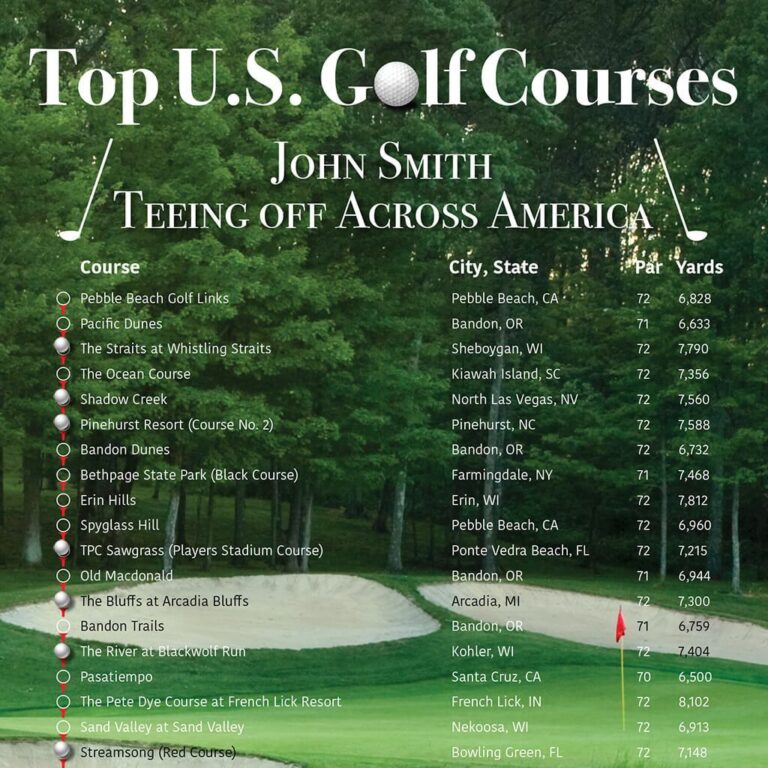Golf rangefinders and hunting rangefinders differ mainly in range and magnification. The former specializes in shorter distances with enhanced accuracy for golfers, while the latter offers longer range detection suitable for hunters.
Understanding the key differences between golf rangefinders and hunting rangefinders is essential for sports enthusiasts looking to enhance their experience. A golf rangefinder is a precision instrument designed to measure the distance to the pin with pinpoint accuracy, a feature crucial for selecting the right club and improving your game.
On the other hand, hunting rangefinders prioritize durability and the ability to measure longer distances, often in rugged terrain. They typically come with features that compensate for elevation changes and are less focused on short-range precision. Both types of devices use laser technology to provide distance readings, but their specialized functions set them apart, catering to the distinct needs of each activity. Selecting the right rangefinder can be a game-changer, whether you’re aiming for a hole-in-one or tracking game in the wild.
Contents
- 1 Introduction To Rangefinders
- 2 Key Features Of Golf Rangefinders
- 3 Key Features Of Hunting Rangefinders
- 4 Design And Durability
- 5 Optical Quality And Magnification
- 6 Battery Life And Power Options
- 7 Price Comparison
- 8 Use Cases And Scenarios
- 9 Ease Of Use
- 10 Accuracy And Precision
- 11 Brand And Model Variations
- 12 Expert And Consumer Reviews
- 13 Final Thoughts
- 14 Frequently Asked Questions
- 15 Conclusion
Introduction To Rangefinders
Rangefinders bring precision to outdoor activities. They measure distance quickly and accurately. This tech aids in golfing and hunting, catering to unique needs. Golfers use them to gauge shot distances. Hunters rely on them to estimate the range to their targets. Despite their shared goal of distance measurement, golf and hunting rangefinders differ in features and functionalities.
Purpose In Golf
Golf rangefinders are essential for players aiming to improve their game. They provide exact yardages to the flagstick, hazards, and other course elements. This precise data helps golfers select the best club and plan their shots. Golf rangefinders often include slope calculations, providing adjusted distances based on elevation changes.
- Accurate yardages to greens, hazards, and doglegs
- Club selection assistance
- Slope feature for elevation consideration
Purpose In Hunting
Hunting rangefinders focus on target acquisition in varied terrains. They often feature robust, weather-resistant designs. These rangefinders can calculate long distances and have speed detection capabilities. Enhanced magnification and camouflage patterns are common traits. Hunters can track moving prey at significant distances, making clean and ethical shots.
- Long-range measurement for accurate shooting
- Speed detection to track moving targets
- Enhanced magnification for clear visuals at distance
Key Features Of Golf Rangefinders
Key Features of Golf Rangefinders enhance the game by providing accurate measurements. These features help golfers make informed decisions on the course. Let’s explore some essential features.
Slope Calculation
Golf rangefinders with slope calculation offer a significant advantage. They measure the angle of incline or decline. This feature adjusts the distance based on the terrain’s slope. It helps golfers choose the right club and power for their shot.
Pin Seeking Technology
Pin seeking technology is crucial for accuracy. This feature allows rangefinders to locate the flagstick quickly. It isolates the flag from other objects in the background. Golfers can then aim with confidence, knowing they have the correct target.
Key Features Of Hunting Rangefinders
Hunting rangefinders are essential for hunters. They help in making precise shots. This tool can make or break a hunting trip. Here are the key features to look for in hunting rangefinders.
Long-distance Measurement
Hunting rangefinders must cover great distances. A long-range capability allows hunters to plan their shots better. Look for rangefinders that measure hundreds of yards with accuracy. This feature is crucial for tracking game across open terrain.
Angle Compensation
Hunting often involves uneven terrain. Angle compensation is a vital feature. This technology considers the angle of the shot. It provides a true horizontal distance to the target. This feature ensures a more successful hunt.
| Feature | Benefit |
|---|---|
| Long-Distance Measurement | Tracks distant targets with precision |
| Angle Compensation | Adjusts for elevation changes |
- Long distances are measurable.
- Angles don’t confuse the device.
- Hunters can trust the distance readouts.
Design And Durability
Design and Durability play crucial roles in the effectiveness of both golf and hunting rangefinders. These devices need to withstand the environments they are used in. Golfers and hunters require different design features for optimal use.
Weather Resistance
Golf rangefinders often boast water-resistant designs. This feature protects against morning dew and rain. Hunters, on the other hand, might face harsher weather conditions. Hunting rangefinders need waterproof and fog-proof capabilities. These qualities ensure the device’s longevity and reliability during critical moments.
Portability And Ergonomics
Lightweight and compact are key for both types of rangefinders. Golf rangefinders lean towards sleek designs for easy storage in a golf bag. They often include a sturdy case for added protection. Hunting rangefinders prioritize a grip that ensures steady aiming. They feature a rugged, non-slip exterior for use with gloves.
- Golf rangefinders are slim and light.
- Hunting rangefinders come with a secure grip.
Both types should be durable enough to handle drops and bumps. The build quality can make or break the experience. With these factors in mind, manufacturers design rangefinders to be both user-friendly and tough.
Optical Quality And Magnification
When choosing a rangefinder, optical quality and magnification are crucial. These features determine how clear and close objects appear. Golfers and hunters need different things from their rangefinders. Let’s explore the differences.
Lens Clarity
Lens clarity affects how well you see through a rangefinder. Clear lenses are vital for both golfers and hunters.
- Golf rangefinders need clear lenses to spot small objects like flags from far away.
- Hunting rangefinders require lenses that work well in low light. This helps hunters see through shadows and dusk.
Both types use multi-coated lenses. These reduce glare and improve vision.
Zoom Capabilities
Magnification lets users see far away objects closer. More zoom means objects appear nearer.
| Type | Zoom | Use Case |
|---|---|---|
| Golf Rangefinder | 4x to 6x | Spotting flags and hazards |
| Hunting Rangefinder | 6x to 8x | Tracking moving targets |
Golfers need less zoom because golf courses are open. Hunters need more zoom to spot animals in dense areas.
Battery Life And Power Options
Battery life and power options play crucial roles in the performance of golf and hunting rangefinders. These devices need reliable power to deliver precise measurements. Different models offer various battery solutions tailored to their specific use cases. Understanding these can ensure users select the right rangefinder for their needs.
Battery Types
Golf and hunting rangefinders commonly use two main types of batteries: replaceable and rechargeable. Replaceable batteries, often CR2 lithium, are convenient but require carrying spares. Rechargeable models offer the ease of USB charging, reducing waste and the need for replacement batteries.
- CR2 Lithium Batteries: Long-lasting, but require replacements
- Rechargeable Batteries: Eco-friendly, with USB charging capabilities
Energy Efficiency
Energy efficiency in rangefinders is vital for longer use during a round of golf or a hunting trip. Features like auto-off help conserve power when the device is not in use. Some models display a battery indicator, allowing users to monitor power levels and plan accordingly.
| Feature | Benefit |
|---|---|
| Auto-off Function | Saves power |
| Battery Indicator | Tracks battery life |
High-quality rangefinders are designed to be energy-efficient, ensuring that battery life extends over multiple sessions. This is essential for golfers and hunters who spend long hours on the course or in the field.
Price Comparison
When considering a rangefinder, whether for golf or hunting, price plays a pivotal role. Rangefinders come in a broad spectrum of prices, influenced by factors like brand, features, and technology. In this section, we delve into the cost variations between golf and hunting rangefinders. Let’s break down what you can expect to pay and what you get for your money.
Cost-effectiveness
Golf and hunting rangefinders serve different purposes, which is reflected in their cost. Typically, a golf rangefinder is a more cost-effective option for those who solely intend to use it on the course. This is because golf rangefinders often focus on specific features like slope calculation and pin-seeking technology. These specialized features can be less expensive compared to the advanced tech in hunting rangefinders designed for varied terrains and longer distances.
| Golf Rangefinder | Hunting Rangefinder |
|---|---|
| Basic models start from $100 | Entry-level options begin around $150 |
| Mid-range: $150 – $300 | Mid-tier: $200 – $400 |
| High-end can exceed $400 | Top-quality may surpass $500 |
Value For Money
Value for money doesn’t always equate to the lowest price. For golfers, rangefinders with essential functions like distance measurement and slope adjustment offer great value. Hunters might need features such as ballistic calculators, weather resistance, and long-range capability. These additional features can hike the price but provide invaluable information in the field.
- Golf Rangefinders: Ideal for course use; cost balanced by golf-specific features.
- Hunting Rangefinders: Built for rugged use; price justified by robust, advanced features.
Selecting between a golf or hunting rangefinder comes down to intended use and necessary features. A higher price tag might mean better quality and more features that suit your activity. Consider the balance between what you need and the price you’re willing to pay for the best experience.
Use Cases And Scenarios
Understanding the right tool for the job can make all the difference. Let’s explore the use cases and scenarios for golf and hunting rangefinders.
Best For Golfers
A golf rangefinder offers specific features tailored for the course:
- Yardage Accuracy: Precise measurements to the flagstick.
- Slope Calculation: Adjusts for elevation changes.
- Scan Mode: Captures distances to hazards and layups.
Golf rangefinders help players make informed club choices.
Best For Hunters
Hunting rangefinders stand out in the wild with:
- Long Range Performance: Targets distant prey accurately.
- Magnification: Brings the target closer visually.
- Rugged Design: Durable for tough environments.
- Weather Resistance: Works in various conditions.
They provide critical data for a successful hunt.
Ease Of Use
The ‘Ease of Use’ of golf and hunting rangefinders is a key factor for buyers. Each type is designed with different user needs in mind. Understanding these can help you choose the right one for your activities.
User Interface
Golf rangefinders often feature a simple interface. They provide essential data like distance to the hole. This makes them easy to use even for those new to the sport.
Hunting rangefinders, on the other hand, come with more complex options. They track prey movement and consider environmental factors. This requires a more detailed display.
Learning Curve
- Golf rangefinders: Quick to master, with basic functions.
- Hunting rangefinders: Need more time to learn due to advanced features.
Overall, golf rangefinders are user-friendly for immediate use. Hunting rangefinders require some learning but offer detailed insights for effective tracking.
Accuracy And Precision
When choosing a rangefinder, whether for golf or hunting, accuracy and precision are key. These devices help measure distances, but they differ in functionality to suit their specific use cases. Understanding the technology and real-world performance is crucial to selecting the right rangefinder.
Technology Behind Accuracy
Golf rangefinders and hunting rangefinders use different technologies to achieve their high levels of accuracy. Golf rangefinders often employ laser technology that is fine-tuned to pick up flagsticks and other specific course features.
In contrast, hunting rangefinders must contend with moving targets and varied terrains. They use advanced algorithms to calculate distances despite these challenges.
| Feature | Golf Rangefinder | Hunting Rangefinder |
|---|---|---|
| Target Acquisition | Pinpoint static objects | Track moving targets |
| Technology | Laser precision for course features | Complex algorithms for dynamic environments |
Real-world Performance
Golf rangefinders excel on the manicured fairways, providing golfers with exact yardages to greens and hazards. This precision is crucial for selecting the right club and making the shot.
- Quickly measures distance to the pin
- Account for slope (where allowed)
- Enhance shot accuracy
Hunting rangefinders face diverse conditions from dense forests to open fields. They must perform in all weather, spotting prey from afar.
- Adapt to varied landscapes
- Measure longer distances
- Provide critical data for precise shooting
Brand And Model Variations
When choosing a rangefinder, brands and models make a big difference. Golf and hunting rangefinders may look similar, but they cater to different needs. Let’s dive into the variations that set them apart.
Popular Brands
Top brands dominate the rangefinder market. Each brand offers unique features tailored to golfing or hunting.
- Bushnell: Known for high-quality optics in both golf and hunting.
- Leupold: Offers durable rangefinders with advanced technology.
- Nikon: Delivers clear images and accurate measurements.
- Vortex: Builds rangefinders with hunters in mind.
- TecTecTec: Provides budget-friendly options for golfers.
Choosing The Right Model
Selecting the right model is crucial for performance. Consider these points:
| Feature | Golf Rangefinder | Hunting Rangefinder |
|---|---|---|
| Range | Shorter distances | Longer distances |
| Target Priority | First priority | Second priority |
| Magnification | Lower | Higher |
| Size | Compact | Robust |
Match your needs with the right features. A golfer needs quick yardage to the flagstick. A hunter requires long-range capabilities and durability.
Expert And Consumer Reviews
Expert and Consumer Reviews offer valuable insights into the usefulness of Golf Rangefinders versus Hunting Rangefinders. Users from both communities share their experiences, helping others make informed decisions.
Testimonials From Golfers
- John Doe: “This Golf Rangefinder improved my game! Accurate and easy to use.”
- Emily Smith: “Lightweight, quick, and precise. Best golf accessory I’ve bought!”
- Mike Johnson: “It locks onto flags instantly. My scores are better than ever.”
Testimonials From Hunters
- Sarah Brown: “Reliable in the field, even in rough weather. Spot on accuracy!”
- David Wilson: “It helps me track targets over long distances. Super useful.”
- Linda White: “Compact and rugged. It stands up to tough hunting trips.”
| Feature | Golf Rangefinder | Hunting Rangefinder |
|---|---|---|
| Primary Use | Measuring distance to holes | Measuring distance to targets |
| Environment | Open fields | Various terrains |
| Technology | Pin seeker | Ballistic calculator |
Both groups highly recommend their specific devices for enhancing performance in their respective activities. These tools are essential for success, whether on the golf course or in the hunting field.
Final Thoughts
Choosing between a golf rangefinder and a hunting rangefinder can be tricky. Both serve specific purposes. Golf rangefinders are precision tools designed for the fairway, while hunting rangefinders withstand rugged environments and offer crucial features for the wild. It’s time to weigh the choices and decide which device fits your needs best.
Making An Informed Decision
Key differences shape the choice between these rangefinders. Consider these aspects:
- Range: Hunting rangefinders often reach farther distances.
- Durability: Hunting models boast robust builds for outdoor use.
- Target Priority: Golf rangefinders favor the nearest target, perfect for flags.
- Weather Resistance: Hunters benefit from waterproof features.
Check product specifications and user reviews to make a smart choice. Your decision impacts your performance in the field or on the course.
Personal Preferences And Requirements
Your selection should reflect your personal needs. Think about your activities. Do you spend weekends on a golf course or in the woods? Your choice should mirror your lifestyle.
| Golf Rangefinder | Hunting Rangefinder |
|---|---|
| Accurate on the green | Long-range focus |
| Pin-seeking technology | Rugged and weatherproof |
| Sleek designs | Camouflage options |
Consider ergonomics, battery life, and ease of use. Your comfort and convenience are vital. The right rangefinder feels like a natural extension of your hand.
Frequently Asked Questions
Can You Use A Golf Range Finder For Hunting?
Yes, you can use a golf range finder for hunting as it helps estimate the distance to your target accurately.
Can You Use A Vortex Rangefinder For Golf?
Yes, a Vortex rangefinder can be used for golf to accurately measure distances to the flagstick and other course features.
Do You Need A Range Finder For Hunting?
A rangefinder is not essential for hunting, but it can significantly enhance accuracy and shot placement by providing precise distance measurements to targets.
What Is Better A Range Finder Or Golf Watch?
Choosing between a rangefinder and a golf watch depends on personal preference. Rangefinders offer precise distance measurements, while golf watches provide convenience with wearable, at-a-glance yardages and additional features like fitness tracking.
Conclusion
Navigating the nuances between golf and hunting rangefinders is key for precision in your sport. Each serves a specific purpose, tailored to enhance performance in varied environments. Remember, the right choice hinges on your primary use—be it the fairway or the field.
Choose wisely, and your rangefinder will become an indispensable ally.






